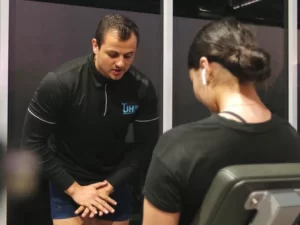
Put yourself in this situation.
Everything is going great. You’re in the middle of a training block. You feel great, you’re progressing well, you’re recovering smoothly and you’re finding new levels of strength and fitness. The worst possible scenario for your training happens- you injure yourself.
Now it hurts pretty bad just to do the usual exercises that you normally wouldn’t even think about and there’s simply no way you can lift the same load pain-free.
Realistically you have a couple of options, the two most common options I see:
1. You can stop training altogether and wait until the pain goes down, which can take up to two weeks or more depending on the severity.
Or
2. You can continue to train around the injury and continue to improve and make gains with a manipulated program.
In my experience, people usually revert straight to option 1 once they feel pain. It makes sense though when you think about it right? Pain equals damage right? Wrong- this is not always the case. This is where many people fall behind in their progress. General injuries in the gym are rarely associated with actual structural damage. This is probably the largest aspect of injury, learning to deal with the negative mindset and conscious thought around that injured site.
Therefore, if we can rule out any real damage, with the pain most likely being due to tight muscle or strains, then it’s safe to assume that we could adapt around this until the pain resides.
How do you adapt around this? Assess the pain scale out of 10. Any movement that exceeds a threshold of 3 or 4/10 is likely to place too much pressure on the sore muscle or area. Simplify the movement pattern as much as needed and reduce the overall load just enough for the overall threshold to be no more than 3/10. By the time you have recovered from the pain of the initial injury, you’ll be closer to your goals than if you were to completely stop.
Sharp low back pain after doing back squats? Change the bar position, experiment with a safety bar squat, goblet squat or a hack squat. Reduce overall load and focus on keeping a tight brace and stacked core. After a week or two of this, you’d be feeling and moving better, you’d still progress in your squats and you’d prevent the mental blockage of re-attempting squats again.
Take this with a grain of salt and use caution. Start on the lighter side and slowly apply more weight to match the pain threshold. Before you know it, you’ll be lifting pain-free again.
The saying that I have heard and been told, “motion is lotion” has never been more evident than here.



